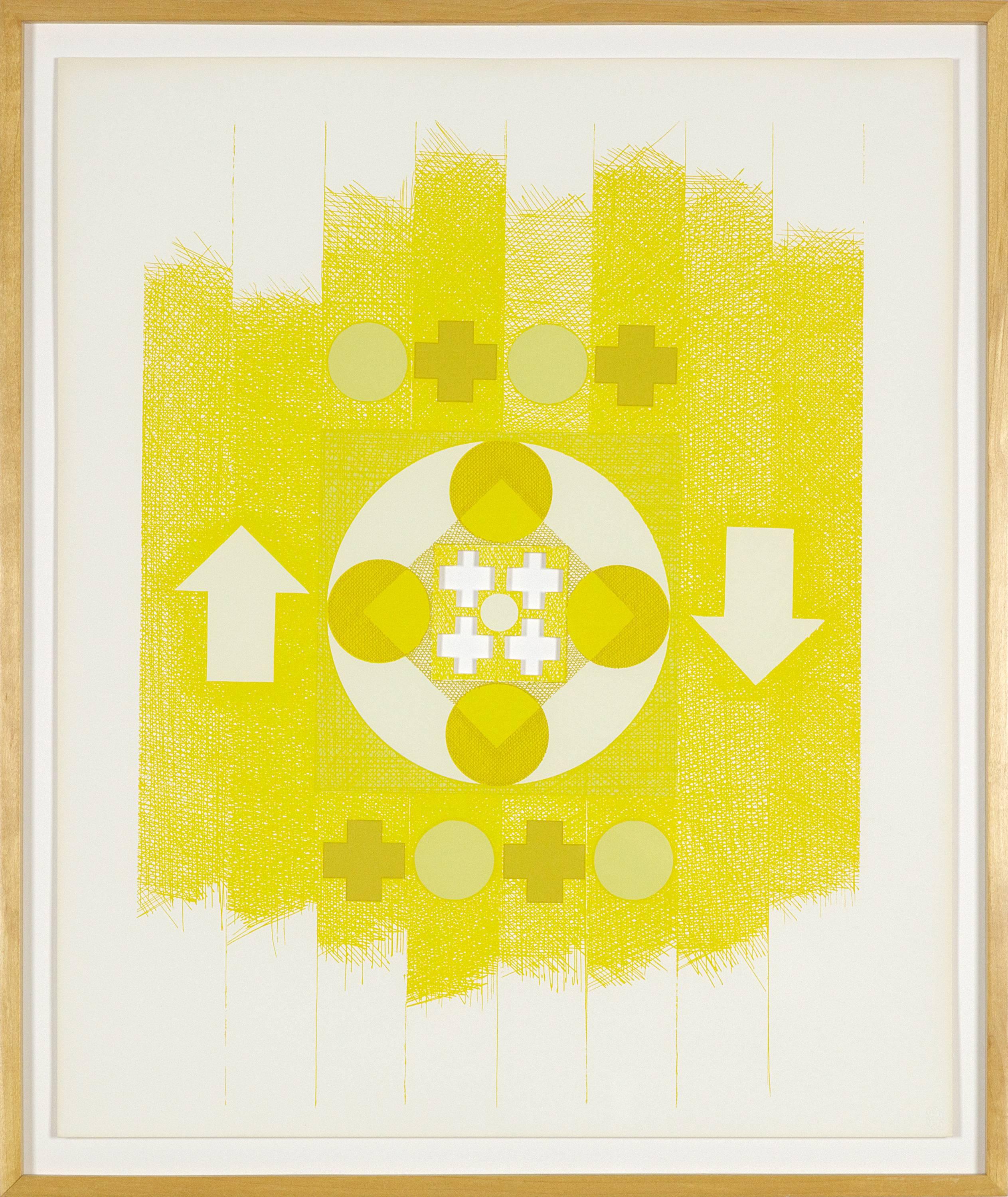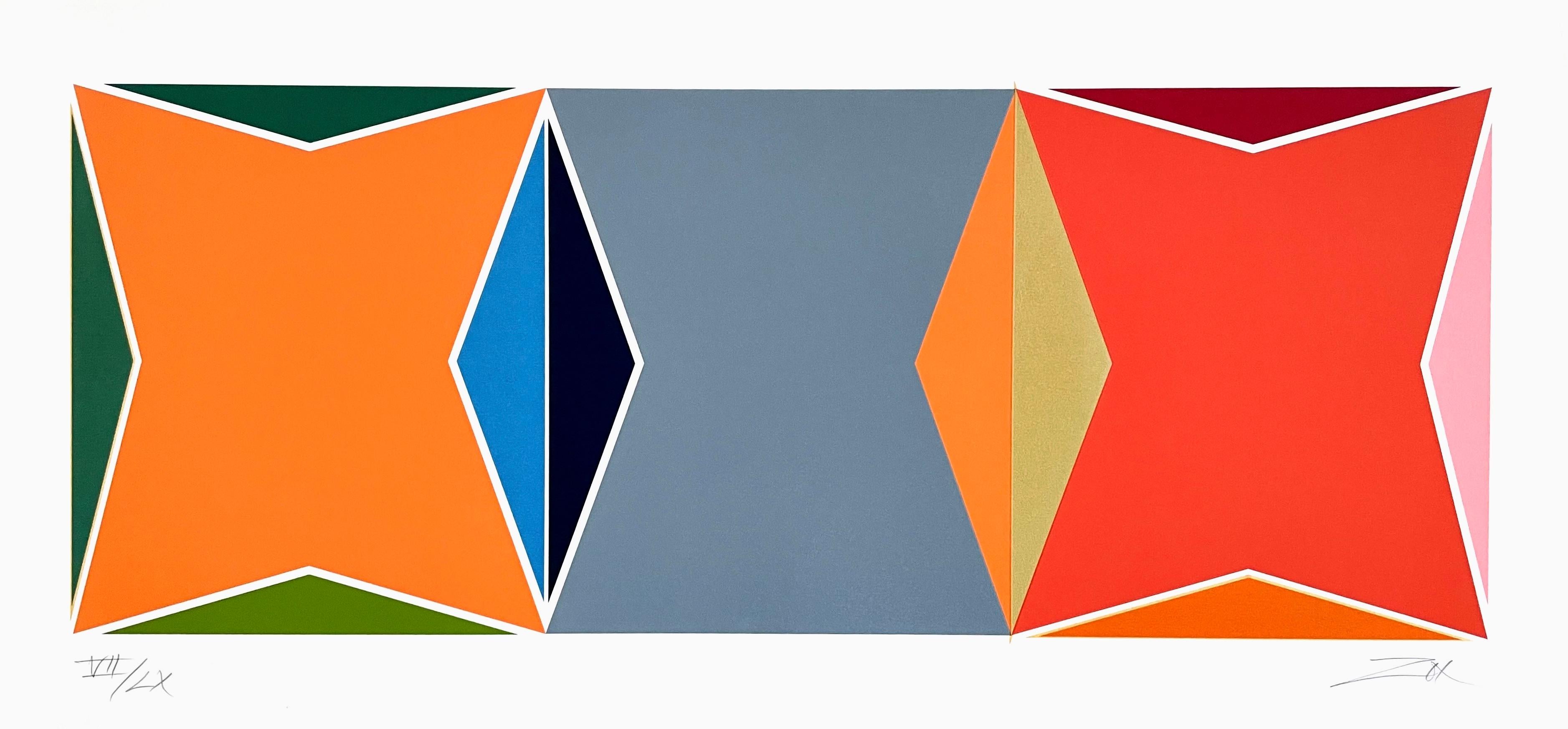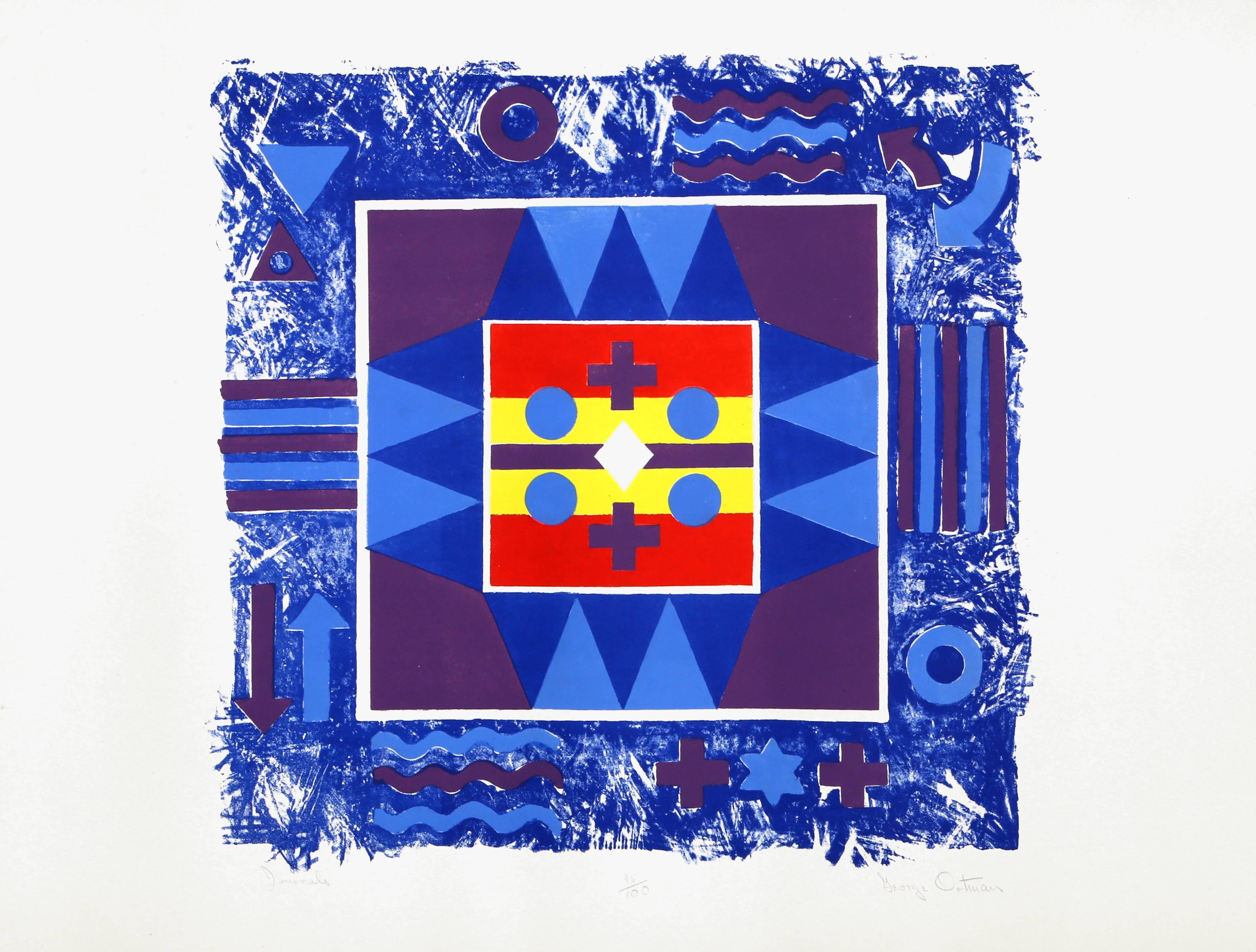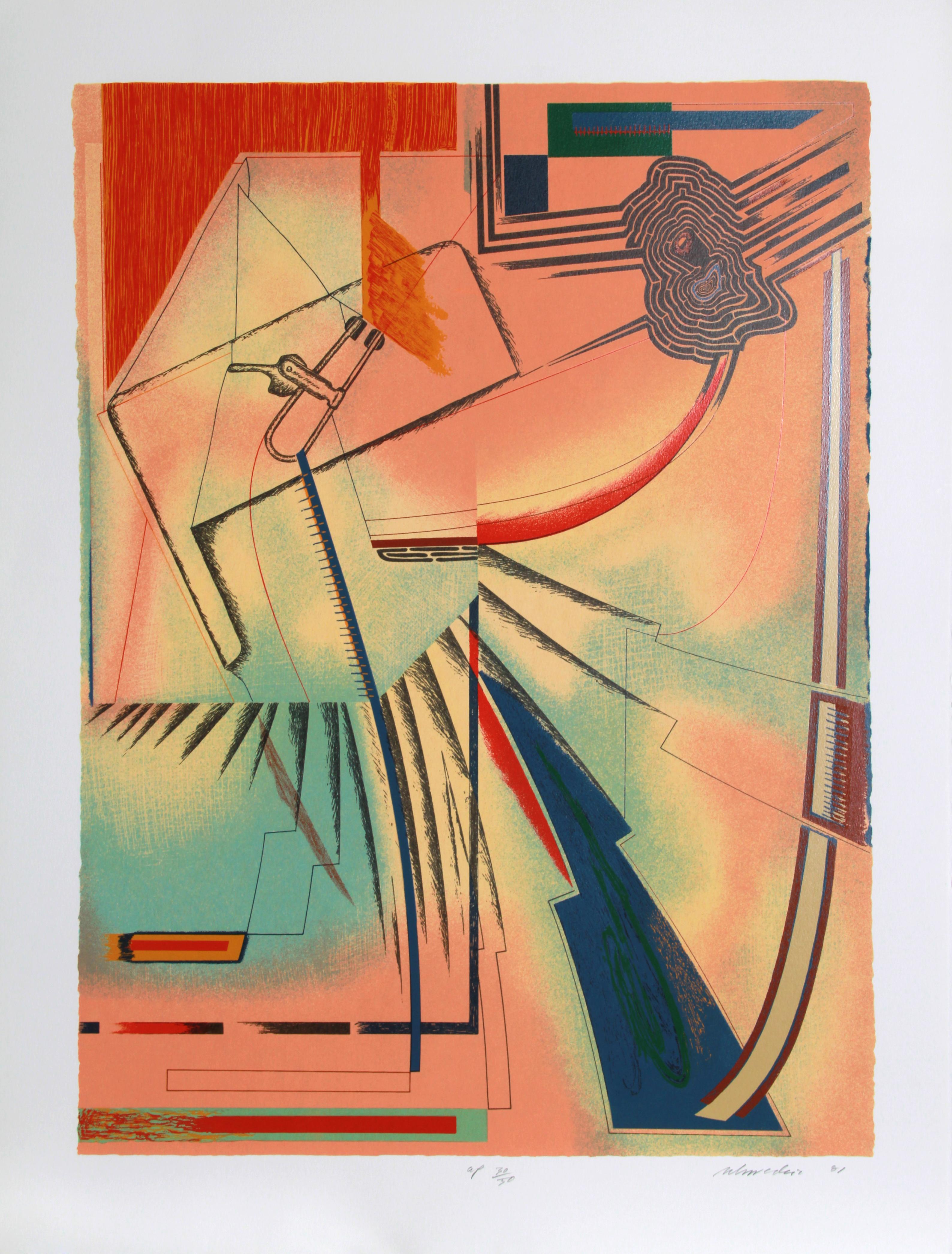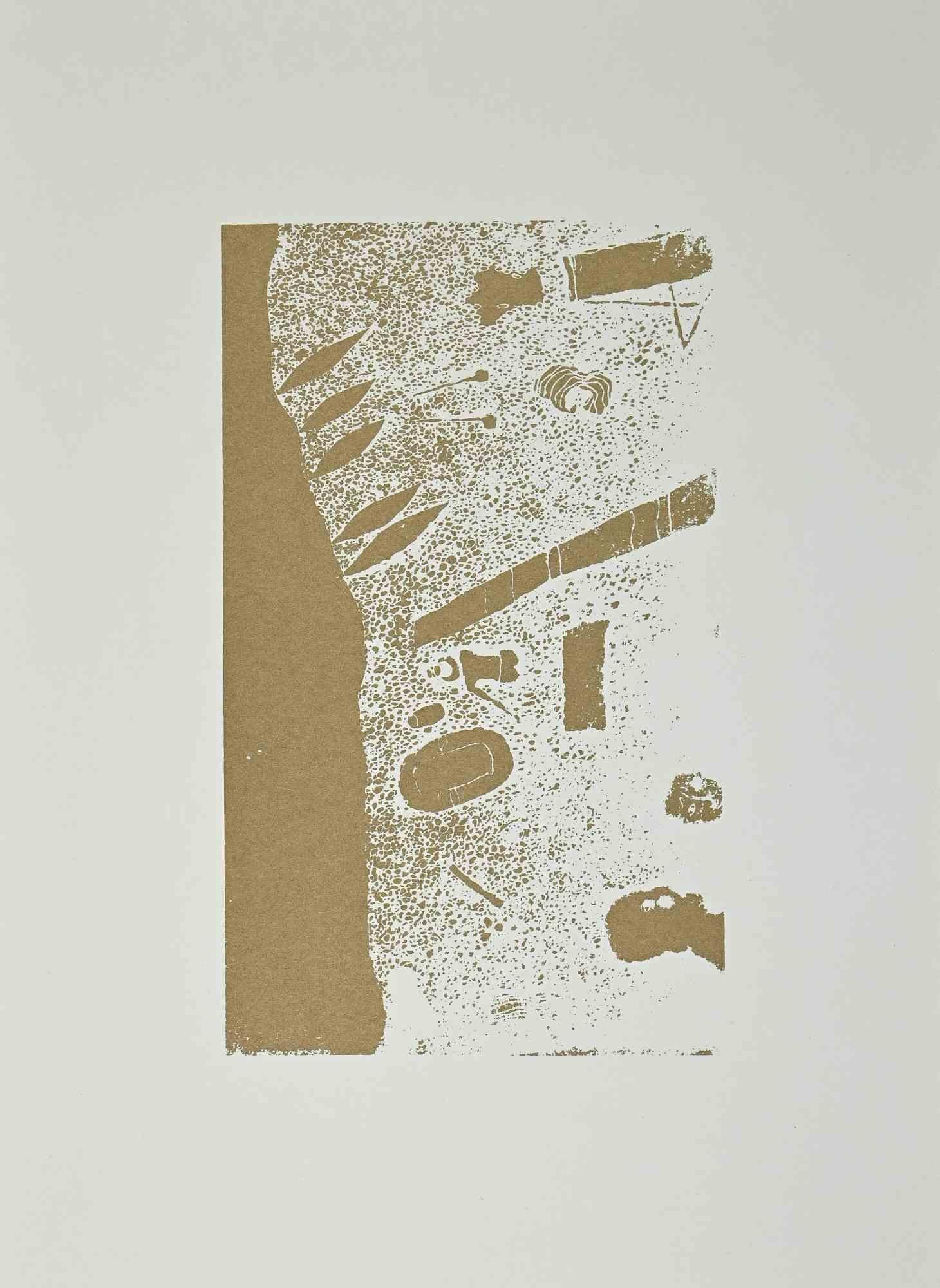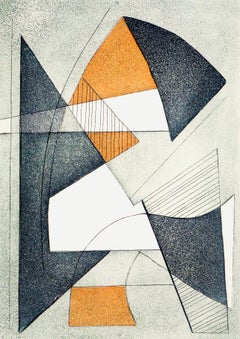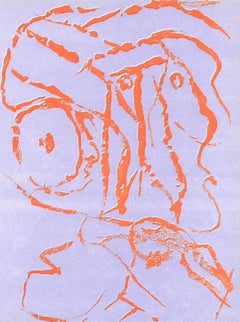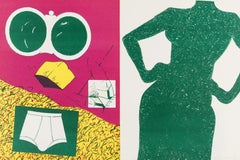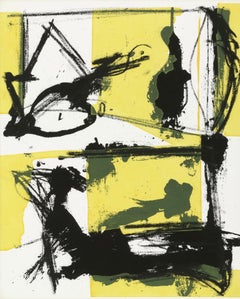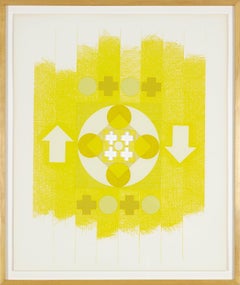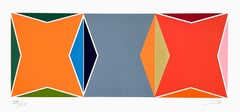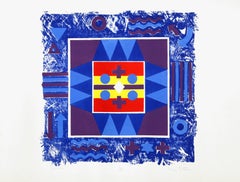Items Similar to Composition, X + X, Ten Works by Ten Painters, George Earl Ortman
Want more images or videos?
Request additional images or videos from the seller
1 of 11
George Earl OrtmanComposition, X + X, Ten Works by Ten Painters, George Earl Ortman1964
1964
$1,996
$2,49520% Off
£1,510.54
£1,888.1820% Off
€1,734.94
€2,168.6720% Off
CA$2,838.41
CA$3,548.0120% Off
A$3,077.42
A$3,846.7720% Off
CHF 1,621.79
CHF 2,027.2420% Off
MX$37,424.42
MX$46,780.5320% Off
NOK 20,177.69
NOK 25,222.1120% Off
SEK 19,081.33
SEK 23,851.6620% Off
DKK 12,952.27
DKK 16,190.3420% Off
About the Item
Silkscreen on Mohawk Superfine Bristol paper. Inscription: unsigned and unnumbered, as issued. Good condition. Notes: From the folio, X + X, Ten Works by Ten Painters, 1964. Published by the Wadsworth Atheneum Museum of Art, Hartford; printed by Sirocco Screenprints, Inc., North Haven, 1964, in an edition of D. Excerpted from the folio, This portfolio was commissioned and printed in an attempt to extend as much of the visual impact as possible of ten artists to paper and to make these prints available to collectors who might not otherwise have such a vivid slice of the artist. The dry surface of screening seemed to be most apt to translate the effect of their painting, both the flatness which is the unifying bond between the ten, and the insistance of paint on the surface of canvas so like the visible heft of ink on paper here. Samuel J. Wagstaff, Jr., Curator of Printings.
GEORGE EARL ORTMAN (1926-2015) was an American painter, printmaker, constructionist and sculptor. His work has been referred to as Neo-Dada, pop art, minimalism and hard-edge painting. His constructions, built with a variety of materials and objects, deal with the exploration off visual language derived from geometry—geometry as symbol and sign.
- Creator:George Earl Ortman (1926, American)
- Creation Year:1964
- Dimensions:Height: 24 in (60.96 cm)Width: 20 in (50.8 cm)
- Medium:
- Movement & Style:
- Period:
- Condition:
- Gallery Location:Southampton, NY
- Reference Number:1stDibs: LU1465215322822
About the Seller
4.9
Platinum Seller
Premium sellers with a 4.7+ rating and 24-hour response times
Established in 1978
1stDibs seller since 2021
1,191 sales on 1stDibs
Typical response time: <1 hour
- ShippingRetrieving quote...Shipping from: Southampton, NY
- Return Policy
Authenticity Guarantee
In the unlikely event there’s an issue with an item’s authenticity, contact us within 1 year for a full refund. DetailsMoney-Back Guarantee
If your item is not as described, is damaged in transit, or does not arrive, contact us within 7 days for a full refund. Details24-Hour Cancellation
You have a 24-hour grace period in which to reconsider your purchase, with no questions asked.Vetted Professional Sellers
Our world-class sellers must adhere to strict standards for service and quality, maintaining the integrity of our listings.Price-Match Guarantee
If you find that a seller listed the same item for a lower price elsewhere, we’ll match it.Trusted Global Delivery
Our best-in-class carrier network provides specialized shipping options worldwide, including custom delivery.More From This Seller
View AllProjets de Pégase, Paroles peintes I, Alberto Magnelli
By Alberto Magnelli
Located in Southampton, NY
Etching on vélin Johannot d’Arches paper. Inscription: Unsigned and unnumbered, as issued. Good condition. Notes: From the album, Paroles peintes I, 1962. Published by Éditions O. La...
Category
1960s Modern Landscape Prints
Materials
Etching
$3,036 Sale Price
20% Off
Free Shipping
(tariff free*) Sans titre, Société internationale d'art XXe siècle
By Pierre Alechinsky
Located in Southampton, NY
Lithograph on vélin paper. Paper Size: 12.4 x 9.65 inches. Inscription: Unsigned and unnumbered, as issued. Notes: From the album, XXe siècle, Nouvelle série, XXIIe Année, N° 14, Jui...
Category
1960s Modern Figurative Prints
Materials
Lithograph
$716 Sale Price
20% Off
Free Shipping
Télémaque, Composition, Suites nº8, Rencontres (after)
By Herve Telemaque
Located in Southampton, NY
Lithograph on vélin paper. Inscription: Unsigned and unnumbered, as issued. Good condition, with centerfold, as issued. Notes: From the folio, Suites nº8, Rencontres, 1964. Published...
Category
1960s Pop Art Figurative Prints
Materials
Lithograph
Composition, Salute, Grace Hartigan
By Grace Hartigan
Located in Southampton, NY
Silkscreen on handmade Hahnemühle paper. Unsigned and unnumbered, as issued. Good condition. Notes: From the album, Salute, 1960. Published and printed by Tiber Press, New York under...
Category
1960s Abstract Expressionist Abstract Prints
Materials
Screen
Composition, Salute, Grace Hartigan
By Grace Hartigan
Located in Southampton, NY
Silkscreen on handmade Hahnemühle paper. Unsigned and unnumbered, as issued. Good condition. Notes: From the album, Salute, 1960. Published and printed by Tiber Press, New York under...
Category
1960s Abstract Expressionist Abstract Prints
Materials
Screen
(tariff free*) Sans titre, Société internationale d'art XXe siècle
Located in Southampton, NY
Lithograph on vélin paper. Paper Size: 12.4 x 9.65 inches. Inscription: Unsigned and unnumbered, as issued. Notes: From the album, XXe siècle, Nouvelle série, XXXVIe Année, N°42, Déc...
Category
1970s Modern Abstract Prints
Materials
Lithograph
$716 Sale Price
20% Off
Free Shipping
You May Also Like
Ten Works X Ten Painters
By George Earl Ortman
Located in Palm Desert, CA
An abstract screen print executed in bright yellow & chartreuse by Post War artist George Ortman.
Category
1960s Post-War Abstract Prints
Materials
Screen
$3,600 Sale Price
20% Off
When Something is a Picture, Abstract Mixed Media Screenprint by Steven Sorman
By Steven Sorman
Located in Long Island City, NY
Artist: Steven Sorman, American (1948 - )
Title: When Something is a Picture
Year: 1980
Medium: Mixed Media Collage with Fabric, Screenprint, and Glitter, signed and numbered in penc...
Category
1980s Contemporary Mixed Media
Materials
Fabric, Glitter, Mixed Media, Screen
Three Square Composition, Larry Zox
By Larry Zox
Located in Fairfield, CT
Artist: Larry Zox (1937-2006)
Title: Three Square Composition
Year: 1978
Edition: VII/LX; 200 Arabic Numeral, 60 Roman Numeral, plus proofs
Medium: Silkscreen on Arches paper
Size: 2...
Category
1970s Pop Art Landscape Prints
Materials
Screen
$6,000 Sale Price
20% Off
Journals, Abstract Silkscreen by George Ortman
By George Earl Ortman
Located in Long Island City, NY
Artist: George Ortman, American (1926 - )
Title: Journals
Year: circa 1970
Medium: Lithograph, signed and numbered in pencil
Edition: 100
Image Size: 17 x 17 inches
Size: 22 x 30 in....
Category
1970s Pop Art Abstract Prints
Materials
Screen
Piece by Piece, Screenprint by William Schwedler
By William Schwedler
Located in Long Island City, NY
This abstract composition by William Schwedler includes several geometric forms and shapes that are placed alongside straight, angled lines.
Piece by Piece
Artist: William Schwedle...
Category
1980s Abstract Abstract Prints
Materials
Screen
Abstract Composition - Offset Print by Franco Gentilini - 1970s
By Franco Gentilini
Located in Roma, IT
Abstract Composition is a Vintage Offset Print on ivory-colored paper, realized by Franco Gentilini (Italian Painter, 1909-1981) in the 1970s.
The state of preservation of the artwo...
Category
1970s Modern Abstract Prints
Materials
Paper, Offset
More Ways To Browse
George Earl
Wisconsin Poster
Aizpiri Lithograph
Alain Moulis
Alex Katz Forest
Alexander Calder Litho
Alicia Rhett
Andy Warhol Chanel Lithograph
Banksy Palestine
Bernard Buffet Place De La Concorde
Bernard Gantner Lithograph
Bernard Gantner On Sale
Bernard Hay
Charles Wells Prints
Chartreuse Poster
Christo Pink Island
Claude Monet Etching
Claughton Pellew
